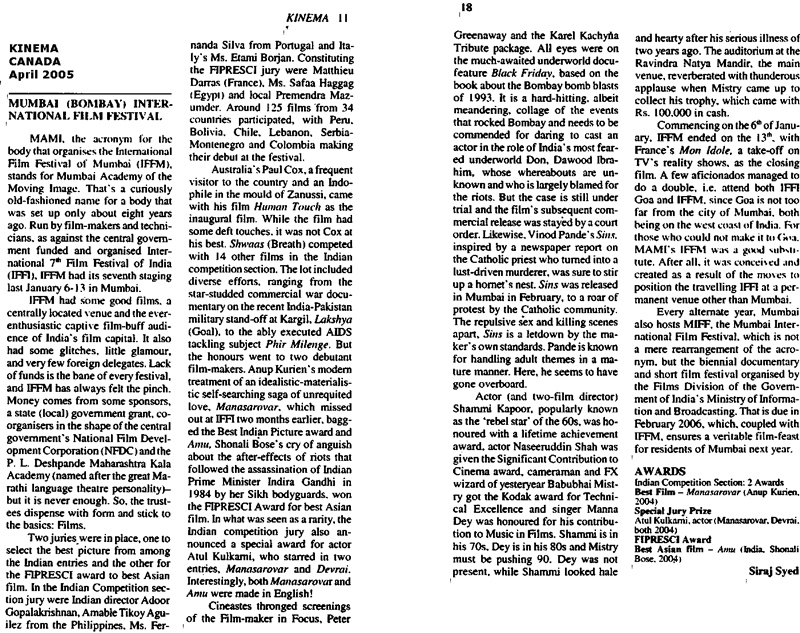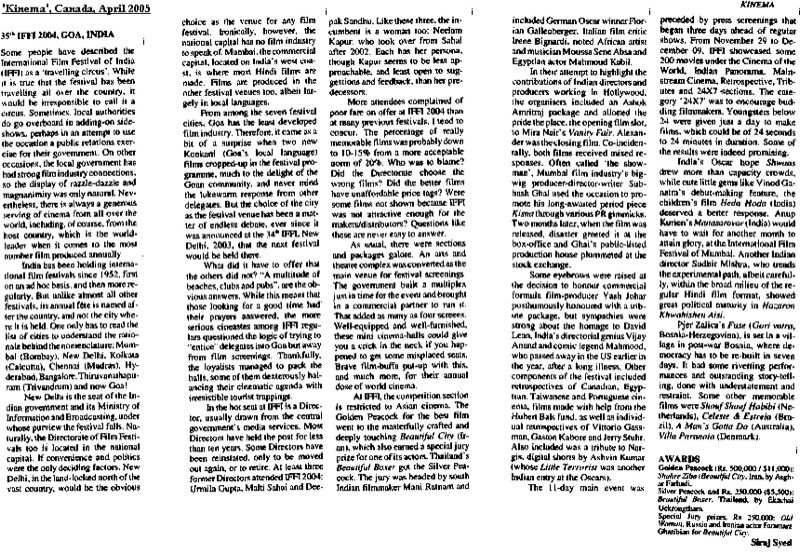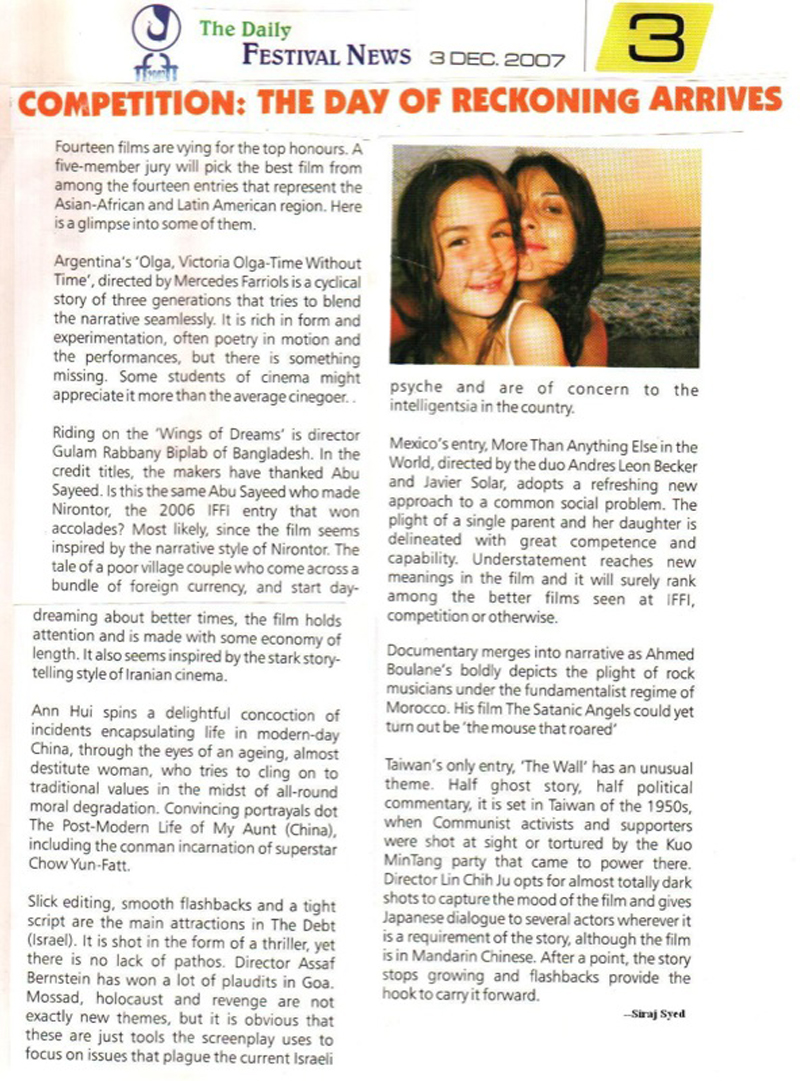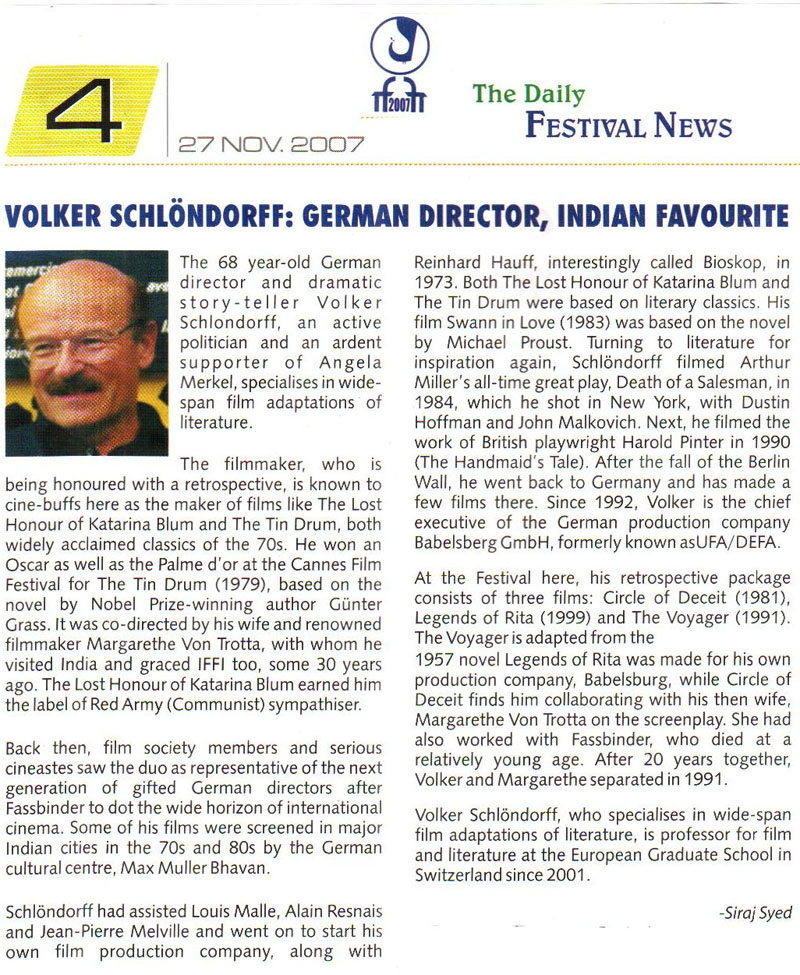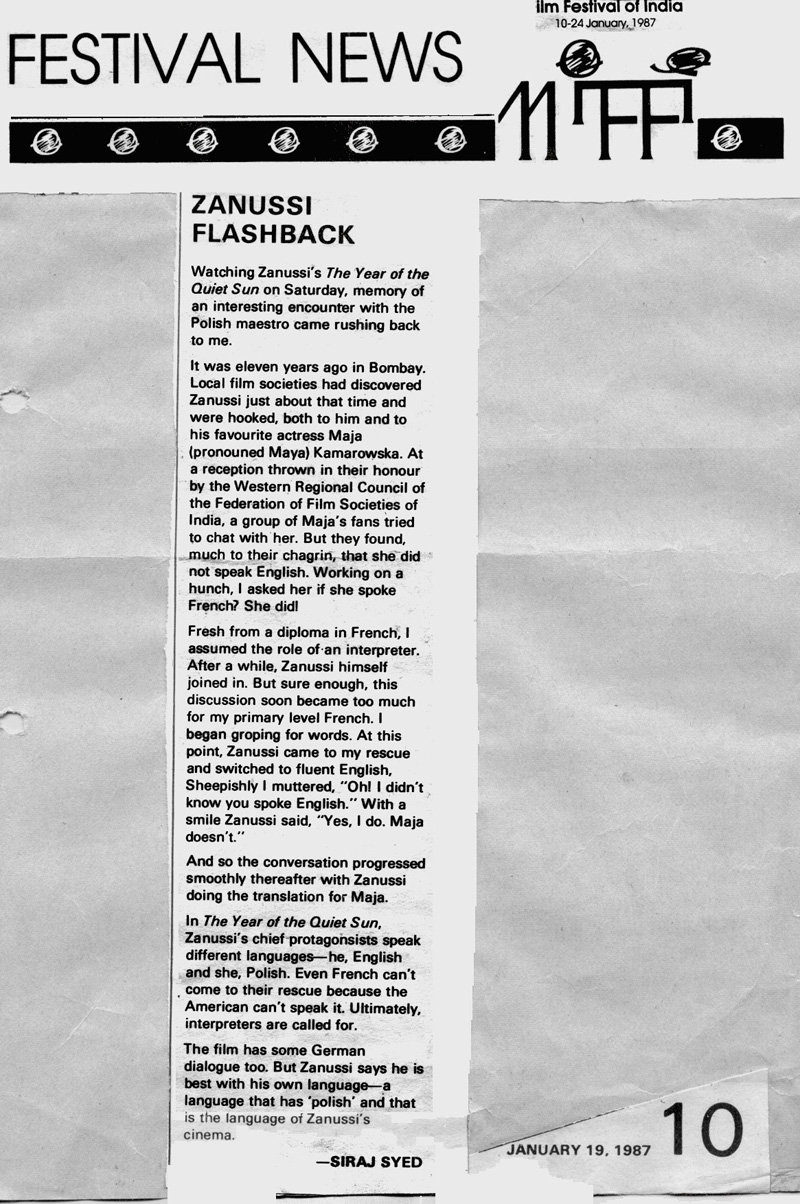|
|
||
|
Pro Tools
FILMFESTIVALS | 24/7 world wide coverageWelcome ! Enjoy the best of both worlds: Film & Festival News, exploring the best of the film festivals community. Launched in 1995, relentlessly connecting films to festivals, documenting and promoting festivals worldwide. Working on an upgrade soon. For collaboration, editorial contributions, or publicity, please send us an email here. User login |
The Legend of Tarzan, Review: Gorillas in the Midst
The Legend of Tarzan, Review: Gorillas in the Midst Remember the immortal lines, “Me Tarzan, you Jane”? Now try this, "He's Tarzan, you're Jane. He'll come for you," says her captor to Jane. He sure will. He’s been coming on to the screen for the last 98 years, in 41 movie and 57 TV outings. Adds up to 98 again. The Legend of Tarzan, preceding the character’s on-screen centenary by a whisker, is a slightly over-written exercise, without too many special effects and CGI, the mandatory motion capture notwithstanding. It works fine if you go in with an open mind. Start comparing it to the technical overload of superhero movies or the novelty of early Tarzan films, and it can be disappointing. It has been years since the man once known as Tarzan (Skarsgård) left the jungles of Africa behind for a ‘gentrified’ life, as John Clayton III, Lord Greystoke, with his beloved wife, Jane (Robbie) at his side. Now, he has been invited back to the Congo to serve as a trade emissary of the British Parliament, unaware that he is a pawn in a deadly convergence of greed and revenge, masterminded by the Belgian, Captain Leon Rom (Waltz). Flash-back. In a tree-house, John Clayton II’s Alice dies of natural causes, and Clayton is killed by apes. An ape named Kala (Madeleine Worrall) and her son Akut (Matt Cross) find Clayton's one year-old son, John Clayton III. Kala adopts him as Tarzan, who would later become a famed ape man. At a point, Tarzan finds Jane daughter of American explorer Prof. Archimedes Q. Porter (John Hurt), who sort of re-discovers him, and the two marry. Later in 1889, a conference is held, to divide up the African Congo. King Leopold II of Belgium seizes control of the land's minerals, which result in large profits. When the resources began to run dry, Leopold sends Captain Léon Rom (Christoph Waltz) to secure more minerals. While Rom searches for the minerals, his men open fire on a militant tribe. Rom is approached by the leader, Chief Mbonga (Djimon Hounsou), who offers Rom the minerals for Tarzan, who killed his son, after Kala died at the young man’s hands. The British Prime Minister (Jim Broadbent) speaks to John, now Lord Greystoke, who is invited by King Leopold to head a trading expedition to Boma. George Washington Williams (Samuel L. Jackson) urges John to go, as he is really Tarzan, the famed ape man that lived in the jungle and was raised by apes. John, Jane, and George take their trip to the Congo. Rom and his men attack the tribe's camp, and tie up John and Jane. Rom also shoots the tribe's leader, in front of everyone. He captures Jane and several tribe members, while John manages to roll away down a hill. George and the remaining tribe members chase the villains, but they escape. George finds John, and unties him. John sets out to find Jane, and the tribe members, with seven of his own, and a reluctant George. Detailed screenplay and a clear narrative are not so common these days. The writers, Adam Cozad and Craig Brewer (a writer-director), who was to direct this film, deserve plaudits for their painstaking research, and the way they have fused elements like diamonds and minerals with the historical rubber trade background of Congo. The character of Williams, probably inspired by Henry Stanley (see below), has been inspiringly delineated, bringing in two more dimensions, of the tyranny of 19th century America, the plunder of Mexico and the annihilation of Red Indians in North America, merely through dialogue. The film is also the most incisive indictment of Belgian King Léopold II and the mass killings and the systematic plunder of Congo. Conflict points and confrontations come in clever trough and surge alternations, pacing the action sensibly, rather than going all guns blazing. Within the jungle and the water, both, players and ambience, keep refreshing themselves. So, it not all Tarzan nor all Jane. There are lions, hippos, elephants, crocodiles and gorillas in the midst. David Yates is best known for directing the final four films in the Harry Potter film series: entries five, six, seven, and eight (2007–2011). Earlier, there was The Tichborne Claimant. No magic here, but pretty close to that. Yates keep his characters and action credible, and once you accept three things—Tarzan was raised by giant apes, can communicate with animals and swing across dense forests from vines—you can go along. There’s a bit of humour too, some very crude, some subtle, some slapstick. I see only two problems with the narrative and the sequences, both related to unfulfilled expectations. Firstly, the film ends-up highly making potentially explosive political statements. Secondly, with a potential ‘Superhero’, probably the oldest in cinema, as the subject, audiences may not have the patience to go through a story too. What? Tarzan has no superpowers? All those grey tones are indicators of ‘destruction of the universe’ battles coming on, aren’t they? No? Oh, they are there because the jungle naturally is dark? How sad! Two problems, but in the era of DC Marvel and Disney, they could be huge problems. Imagine, in a one to one fight with an ape, Tarzan loses. Alexander Skarsgård, son of Swedish actor Stellan Skarsgård (Indians might remember Stellan; see picture), played Meekus in the Zoolander, and appeared in Lars von Triers’ Melancholia too. This could have been his big break. It might fall short of that, yet he makes a mark. Australian Margot Robbie, who made an impact with Wolf of Wall Street, is guts and gumption, and convincingly and madly, in love with her husband. Djimon Hounsou, the Beninese actor (Amistad, Gladiator, Blood Diamond) hams a bit, John Hurt, recovering from cancer and 75 years old, is not called upon to match his Elephant Man, Tinker Tailor Soldier Spy, Harry Potter, Midnight Express, Alien and A Man for All Seasons histrionics, yet manages to say a lot with his silences. Christoph Waltz uses stock-in-trade mannerisms as naturally as ever, included the Mr. Know-All half-grin, the blink and tilt of head, et al. Wonder how long will he cling to them. Blame directors too, for not trying something new with him. Samuel L. Jackson, by contrast, is not playing a venom-spouting perverted part, though you cannot keep him away from the action. Adds star value and experience. The behind-the-scenes creative team includes director of photography Henry Braham (The Golden Compass), and music composer Rupert Gregson-Williams (Urban Ghost Story, Prince of Egypt, Swing Vote), worked as a teacher in Africa. Both make significant contributions. Warner held the local preview on Friday morning, and missed some of the beginning. By the time this is uploaded, Saturday evening, the film has been largely panned. I might be sticking my neck out by being counted among the few that have not panned the movie. By no stretch of imagination is it a milestone. That having been said, I can’t say it is bad either. Rating: *** Trailer: https://youtu.be/jBwynG1beCE
Stellan Skarsgård and Naseeruddin Shah in The Prefect Murder, 1988, directed by Zafar Hai The Legend of Tarzan, as chronicled by Edgar Rice Burroughs Tarzan is the son of a British Lord and Lady who were marooned on the West coast of Africa by mutineers. When Tarzan was a year old, his mother died of natural causes, and his father was killed by Kerchak, leader of the ape tribe into which Tarzan was adopted. Tarzan’s tribe of apes is known as the Mangani, Great Apes, of a species unknown to science. Kala is his ape mother. Tarzan (White-skin) is his ape name; his English name is John Clayton, Lord Greystoke (the formal title is Viscount Greystoke, according to Burroughs in Tarzan, Lord of the Jungle; Earl of Greystoke in later, non-canonical sources, notably the 1984 movie Greystoke). In fact, Burroughs, as narrator of Tarzan of the Apes, describes both Clayton and Greystoke as fictitious names – implying that, within the fictional world that Tarzan inhabits, he may have a different real name. As a young adult, Tarzan meets a young American woman, Jane Porter, who, along with her father and others of their party, is marooned, at exactly the same spot on the African coast where Tarzan’s parents were, twenty years earlier. When she returns to America, he leaves the jungle in search of her, his one true love. In later books, Tarzan and Jane marry, and he lives with her for a time, in England. They have one son, Jack, who takes the ape name Korak (“the Killer”). Tarzan is contemptuous of the hypocrisy of civilisation, and he and Jane return to Africa, making their home on an extensive estate that becomes a base for Tarzan’s later adventures. Edgar Rice Burroughs: Author Portrait From the day he was born, in Chicago, on September 1, 1875, until he submitted one-half a novel to All-Story Magazine in 1911, Edgar Rice Burroughs™ failed in nearly every enterprise he tried. He enlisted as a private in the Seventh U.S. Cavalry, for he had the notion that he might still obtain a commission as an officer, if he distinguished himself in a difficult assignment. Thus, he asked to be sent to the worst post in America–a request the authorities speedily granted. The post was Fort Grant in the Arizona desert, and his mission, as he put it, was to “chase the Apaches”. “I chased a good many Apaches”, he tells us, “But fortunately for me, I never caught up with any of them.” He became a cowboy in Idaho, then a shopkeeper, a railroad policeman, a gold miner, and even an “expert accountant”, although he knew nothing of the profession. Throughout this period, he somehow raised money for a number of his own businesses, all of which sank without a trace. Finally he reached rock bottom. He was 35 years old, without a job, without money. There was a wife and two children to support, and a third child was expected soon. He could buy food and coal only by pawning his watch, and Emma (his wife)’s jewellery. “Then, somehow, I got hold of a few dollars, and took an agency for the sale of a lead-pencil sharpener. I would not try to sell the sharpeners myself, but I advertised for agents and sent them out. They did not sell any pencil sharpeners, but in the leisure moments, while I was waiting for them to come back to tell me that they had not sold any, I started writing Under the Moons of Mars, my first story.” “I got $400 for first magazine serial rights. The check was the first big event in my life. No amount of money today could possibly give me the thrill that this first $400 check gave me.” His next novel was Tarzan of the Apes, an astonishing success on its appearance in All-Story Magazine in 1912, Tarzan of the Apes brought Edgar Rice Burroughs™ a mere $700, but after being rejected by practically every major book publisher in the country, it finally was printed in book form, by A.C. McClurg and Co., and became a 1914 best-seller. By the time his pen was stilled, nearly 100 stories bore Edgar Rice Burroughs™’ name. In 1918, Tarzan came to the screen, with Tarzan of the Apes, starring Elmo Lincoln, the first film in history to gross over one million dollars. Since then, 41 Tarzan films and 57 one-hour television episodes have been produced, each a great financial success. In 1942 he became America’s oldest war correspondent, covering stories with the Pacific Fleet for United Press. He returned home from the South Pacific only after suffering a series of heart attacks. Ironically, he was unable to find a suitable home in Tarzana, and he spent his remaining years in a modest house in nearby Encino. It was there, on March 19th, 1950, that Edgar Rice Burroughs™ set down his pen for the last time. One scholar suggests that the very last line of the very last novel may be taken as Burroughs’ own unintentional valedictory to a very meaningful life: “Thank God for everything.” --Edgar Rice Burroughs, ERB™ website Who was King Léopold II? Léopold II, French in full Léopold-Louis-Philippe-Marie-Victor, Dutch in full Leopold Lodewijk Filips Maria Victor (born 1835, Brussels, Belgium--died 1909) king of the Belgians, from 1865 to 1909. Keen on establishing Belgium as an imperial power, he led the first European efforts to develop the Congo River basin, making possible the formation, in 1885, of the Congo Free State, annexed in 1908 as the Belgian Congo, and now known as the Democratic Republic of the Congo. Léopold II was a first cousin of Queen Victoria of Britain. In 1853, he married Marie-Henriette, daughter of the Austrian archduke Joseph, palatine of Hungary, and became king of the Belgians, on his father’s death, in December 1865. Presenting himself as a philanthropist, eager to bring the benefits of Christianity, Western civilisation, and commerce to African natives—a guise that he perpetuated for many years—Léopold hosted an international conference of explorers and geographers, at the royal palace in Brussels, in 1876. Several years later, he hired the explorer Henry Morton Stanley, to be his man in Africa. For five years, Stanley travelled up and down the immense waterways of the Congo River basin, setting up trading posts, building roads, and persuading local chiefs—almost all of them illiterate—to sign treaties with Léopold. The treaties, some of which appear to have been subsequently doctored to Léopold’s liking, were then put to use by the Belgian monarch. He persuaded first the United States and then all the major nations of Western Europe to recognise a huge swath of Central Africa—roughly the same territory as the modern-day Democratic Republic of the Congo—as his personal property. He called it État Indépendant du Congo, the Congo Free State. It was the world’s only private colony, and Léopold referred to himself as its “proprietor.” The king then embarked on an ultimately successful effort to make a vast fortune from his new possession. Initially he was most interested in ivory, a material that was greatly valued in the days before plastics, because it could be carved into a great variety of shapes—statuettes, jewellery, piano keys, false teeth, and more. For some years, ivory was a principal source of the great wealth that Léopold and his associates drew from the new colony. Between 1880 and 1920, the population of the Congo may have been slashed by up to 50 percent, from perhaps 20 million people at the beginning of that period, to an estimated 10 million at the end. His forced-labour system for gathering rubber was swiftly copied by French, German, and Portuguese colonial officials, with equally fatal results. Because the system’s effects in the Congo could so easily be blamed on one man, who could safely be attacked, because he did not represent a great power, an international outcry focused on Leopold. That pressure finally forced him to relinquish his ownership of the territory, and it became the Belgian Congo in 1908. Léopold, however, made the Belgian government pay him for his prized possession. He died the following year. Because his only son had predeceased him, Léopold’s nephew, Albert I, succeeded to the throne. He is remembered in Belgium for some of what he built with his Congo wealth, such as the monumental Arcade du Cinquantenaire in Brussels, and for his advocacy of strong fortifications in the eastern part of the country, which slowed the advance of German troops in 1914 at the beginning of World War I. His most important legacy, however, remains the human catastrophe that the rubber forced-labour system brought to the Congo—a heritage that continued to echo in that region more than a century after Léopold’s death. --Adam Hochschild, excerpted from Encyclopædia Britannica George Washington Williams, by John Hope Franklin In "George Washington Williams", John Hope Franklin reconstructs the life of the controversial, self-made black intellectual who wrote the first history of African Americans in the United States. Awarded the Clarence L. Holte Literary Prize, this book traces Franklin's forty-year quest for Williams's story, a story largely lost to history until this volume was first published in 1985. The result, part biography and part social history, is a unique consideration of a pioneering historian by his most distinguished successor. Williams, who lived from 1849 to 1891, had a remarkable career as soldier, minister, journalist, lawyer, politician, free-lance diplomat, and African traveller, as well as a historian. While Franklin reveals the accomplishments of this neglected figure and emphasises the racism that curtailed Williams's many talents, he also highlights the personal weaknesses that damaged Williams's relationships and career. Williams led the way in presenting African American history accurately through the use of oral history and archival research, sought to legitimise it as a field of historical study, and spoke out in support of an American Negro Historical Society and as a critic of European imperialism in Africa. He also became erratic and faithless to his family and creditors, and died at the age of forty-one, destitute, and alienated from family and friends. "George Washington Williams" is nothing less than a classic biography of a brilliant, though flawed individual, whose "History of the Negro Race in America" remains a landmark in African American history and American intellectual history.
Tarzan Goes to India, 1962 Jock Mahoney as Tarzan Feroz Khan as Prince Raghu Kumar Simi (Garewal) as Princess Kamara Abbas Khan (Sanjay Khan) as the Pilot Tarzan is called to India to save three hundred elephants that will be drowned if a dam is opened to create a man-made lake to power an electric plant. Tarzan is pitted against two engineers, who ignore the catastrophic results their work will create. 02.07.2016 | Siraj Syed's blog Cat. : Ape Christoph Waltz Congo Delhi Edagr Rice Burroughs Feroz Khan gorillas Jock Mahoney John Hurt King Leopold Margot Robbie Samuel L. Jackson Sanjay Khan Simi Tarzan Hollywood
|
LinksThe Bulletin Board > The Bulletin Board Blog Following News Interview with IFTA Chairman (AFM)
Interview with Cannes Marche du Film Director
Filmfestivals.com dailies live coverage from > Live from India
Useful links for the indies: > Big files transfer
+ SUBSCRIBE to the weekly Newsletter Deals+ Special offers and discounts from filmfestivals.com Selected fun offers
> Bonus Casino
User imagesAbout Siraj Syed Syed Siraj Syed Siraj (Siraj Associates) Siraj Syed is a film-critic since 1970 and a Former President of the Freelance Film Journalists' Combine of India.He is the India Correspondent of FilmFestivals.com and a member of FIPRESCI, the international Federation of Film Critics, Munich, GermanySiraj Syed has contributed over 1,015 articles on cinema, international film festivals, conventions, exhibitions, etc., most recently, at IFFI (Goa), MIFF (Mumbai), MFF/MAMI (Mumbai) and CommunicAsia (Singapore). He often edits film festival daily bulletins.He is also an actor and a dubbing artiste. Further, he has been teaching media, acting and dubbing at over 30 institutes in India and Singapore, since 1984.View my profile Send me a message The EditorUser contributions |





















